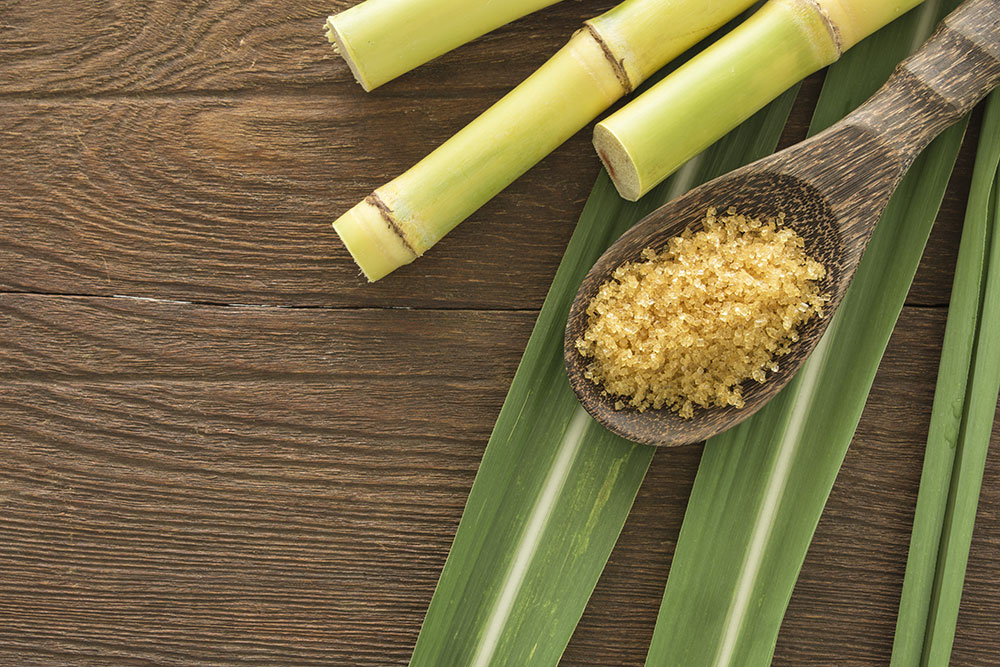Resources » Technical Information
A Guide to Sugars and Gelling Agents
Posted: 11 Sep 2018

There are an array of sugars and gelling agents available, all with their own unique characteristics and functions. If you’re new to using additives in your products it can be tricky to know which ones to use and for what purpose. Worry not! We stock a range of additives which will help to keep centres soft, extend shelf life and thicken hot and cold ingredients. We’ve put together a quick guide for you to describe the function of each sugar and gelling agent, and how it can be used in your chocolate and confectionery products.
Sugars
Description
Code
Function
Composition
A sugar alcohol which has been extracted from fruit. With a low calorific value, sorbitol is used to extend shelf life and to create a smoother texture. It can take the place of part of sucrose or glucose in many confectionery products. Assists with good flavour distribution and doesn’t mask flavours. Recommended for ganache, crémes and fondants but is also particularly helpful in liqueur centres because of its low viscosity compared to sugar or glucose solutions of similar concentration.
Colourless and odourless.
Used to hold in moisture (it is hydroscopic and draws in moisture from the surrounding environment) and causes substances to crystallise less easily. Increases overall shelf life. Helps to keep soft cookies soft and chewy. Approximately 60% as sweet as sucrose (table sugar).
In paste form. A mixture of glucose and fructose. Sweeter than ordinary sugar.
Invertin Humectant
Invertase is an enzyme which gradually converts sucrose into invert sugar (equal parts of glucose and fructose) - a form of sugar which does not readily crystallise and is also hygroscopic. It also tends to impart this property to its environment. Its active component is the enzyme Beta-Fructosidase (derived from yeast cells) carried in Glycerol, and its enzymic activity is always constant. In storage, its container must be kept sealed and it should be kept cool (or preferably refrigerated), where its shelf-life will be at least 12 months.
A sweetish, nearly clear, light yellow, viscous liquid with a slightly yeasty smell.
Generally used in addition to sugar, glucose prevents the recrystallization of sugar and improves the stability of the product. Can be used to stiffen the consistency of ganache and in boiled sugar confectionery. Can also be used in the making of ice cream and gelato to control ice crystal growth.
A viscous syrup. Colourless and flavourless.
Isomalt
A sugar alcohol. Non-hydroscopic and does not crystallise as fast as sugar. Widely used in sugar sculpture and in sugar-free confectionery.
An odourless white crystalline powder.
Gelling and Thinning Agents
Description
Code
Function
Composition
Used to give food a gelatinous texture. In confectionery, pectin or gelatine are essential ingredients in products such as fruit jellies to make them cuttable. Read our Beginner's Guide to Pectin for more on this natural additive.
A white crystalline powder.
Will convert sucrose to invert sugar which makes your sugar more pliable and easier to work with.
A white, almost crystalline powder, soluble in water and alcohol.
A thickening agent for use in both hot and cold applications. A high performance starch that disperses quickly and easily when added to liquid without lumping. Use it to thicken sauces, make wafer thin tuiles or perfectly fluid gels. Does not affect flavour.
Fine white, creamy powder.
Used in making marshmallows, jellies, terrines and mousses to thicken and increase gelatinous texture.
Clear, in sheet form
Used in making marshmallows, jellies, terrines and mousses to thicken and increase gelatinous texture. If appearance is important, leaf gelatine will give a smoother, clearer finish.
A white powder
100% powdered cocoa butter. Add 2% Mycryo to your chocolate once it has reached the right temperature, mix well, and your chocolate should be perfectly crystallised. Can also be used as a substitute for gelatine in pastries and desserts. Seals natural juices and aromas into meat, fish and vegetables without adding fat or flavour – just sprinkle over before cooking. Resists frying temperatures better than butter or oils and doesn’t burn.
Cocoa butter in powdered form.
The above information is given in good faith, and in the light of current knowledge, but without obligation or responsibility on our part. Producers are recommended to carry out their own tests and assure conformity with any regulations etc. that may be relevant from time to time.
.svg)
 white.svg)